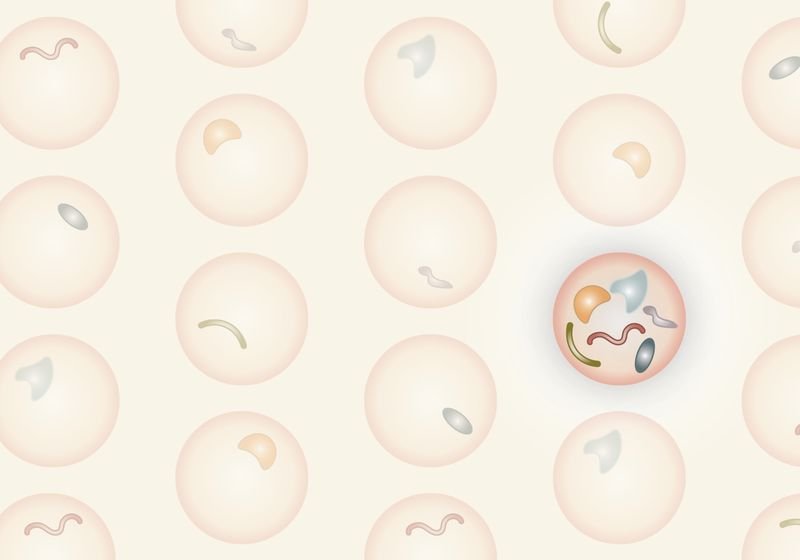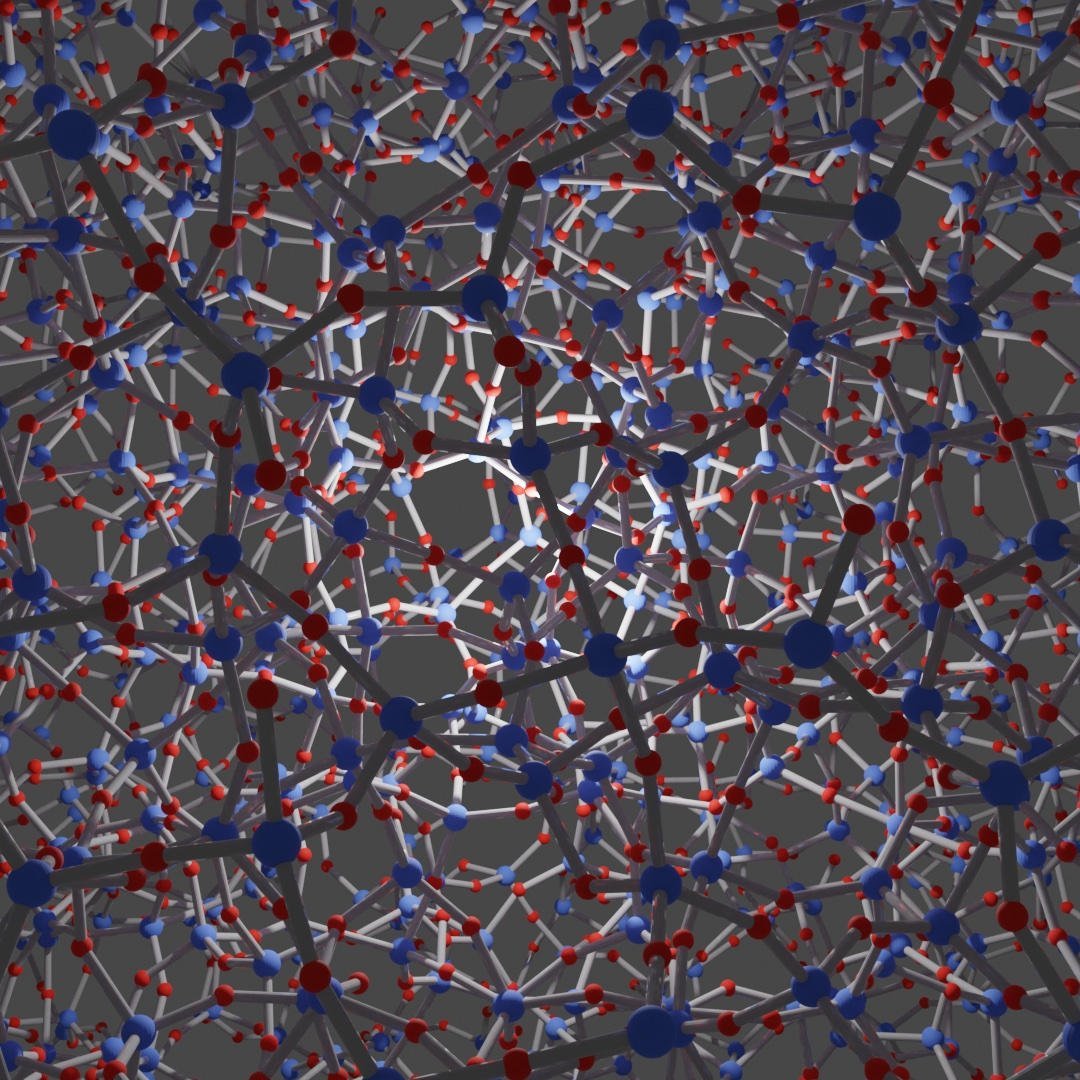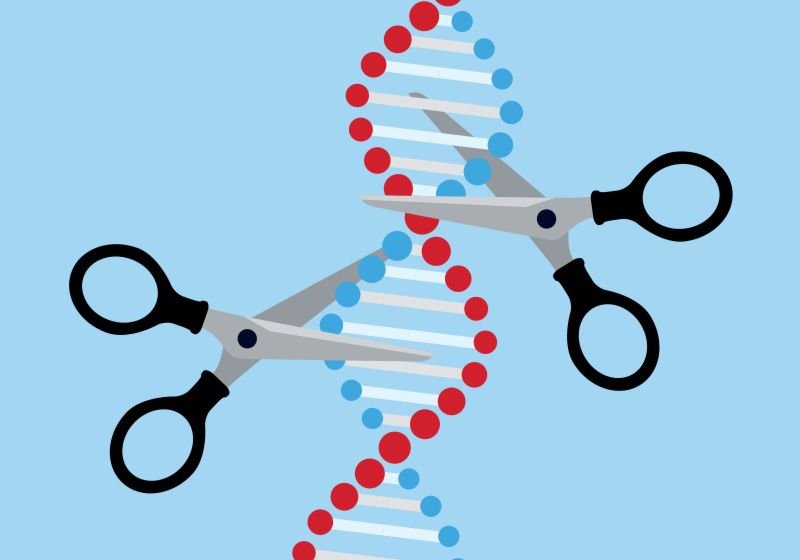In pursuit of a deeper understanding of cellular life, biologists use patterns in data as a springboard for probing specific elements in complex systems. Delete a gene here; express a protein there; and through these meticulous molecular manipulations, the components’ necessity and sufficiency emerges, bringing clues about the nuts and bolts of cellular functioning. In recent decades, scientists from fields outside of the life sciences have entered the biological arena, bringing with them a potpourri of alternative perspectives and approaches for studying complex systems.
Cees Dekker, a biophysicist at Delft University of Technology (TU Delft), is part of a growing community of synthetic biologists who are exploring the design principles of living systems by engineering cells from the bottom up.1 “Just by engineering it, you are faced with certain problems that you didn’t realize when you were studying the system top-down,” said Dekker, echoing a sentiment put forth by the late physicist Richard Feynman, who once said, “What I cannot create, I do not understand.”
Just by engineering it, you are faced with certain problems that you didn’t realize when you were studying the system top-down.
—Cees Dekker, Delft University of Technology
In the future, synthetic cells may become factories that produce proteins and deliver drugs to treat human disease, but for now, they reside in the realm of curiosity-driven research with the goal of answering fundamental questions about biology. Dekker’s dream is to create a synthetic cell from a minimal collection of functional components.2 However, en route to this goal, he needed to learn how to build biology, and how to become a biologist, from the bottom up.
“What I appreciated about [Dekker] was that he was always going for the big aim, for the very juicy target,” said Nicola De Franceschi, a molecular biologist at the International Institute of Molecular Mechanisms and Machines and former postdoctoral researcher in Dekker’s team.

From Superconductors to Biology 101
At the end of the 1990s, a 40-year-old Dekker reflected on what he wanted to do with the next 30 or so years of his career. Up until then, he researched solid-state physics and nanotechnology; he worked on superconductors, explored how electrons traverse carbon nanotubes, and developed the first carbon nanotube transistor.3 Although he found the work rewarding, his interests were changing along with the zeitgeist of the turn of the century. “There was a mood that solid-state physics is 20th century, and in the 21st century, the big open questions are really in biology,” said Dekker. Fascinated by the immense complexity of cellular life, he rerouted his research agenda.
Cees Dekker, a biophysicist at Delft University of Technology, started his career working on quantum effects in semiconductors. Now, he works to build fully autonomous synthetic cells from minimal components.
Wilmar Dik
A curiosity about molecular motors—proteins that gobble up energy molecules to fuel their transport throughout the cell—drove him to attend an ATP synthase conference. He eagerly sat through every talk. “I didn’t know anything about it, but I was totally fascinated by it,” said Dekker, who hit the ground running. He added, “I even started studying first year cell biology books.”
To support this transformation, his lab needed a makeover: ultra-high vacuum millikelvin scanning tunneling microscopes made way for polymerase chain reaction machines and protein purification reagents. However, Dekker didn’t leave everything from his past behind; he leveraged his background in nanotechnology to ease his entry into the biological sphere. His team has since developed nanotechnology-based single-molecule techniques to sequence single proteins, tease apart DNA-protein interactions, and probe how bacteria organize and distribute their chromosomes during replication.4-6
In the last decade, Dekker expanded his research portfolio further into the synthetic world to get closer to understanding nature’s blueprint. “I’m intrigued to understand the spatial and temporal organization of molecules that together form a system that has the attributes of life. Single DNA molecules are not alive; single proteins are not alive; but the combination of these hundreds of components makes an object that can grow, divide, sustain itself, evolve over time, and all that. I find that intriguing,” said Dekker.
Creating Synthetic Life
In 2016, biotechnologist Craig Venter and his colleagues at the eponymous J. Craig Venter Institute stripped down the genome of Mycoplasma mycoides to the bare minimum 473 genes required to sustain a living bacterium.7,8 After chemically synthesizing the genome, they transplanted it into an empty host. And then there was life! These synthetic microbes exhibited behaviors of living bacteria, including colony formation and continuous self-replication.
This top-down approach of genetic plug and play to filter out nonessential genes gives scientists new insights into the basic biology of life and whole-genome design. However, complex systems are incompletely defined or understood, as evidenced by the 149 genes of unknown function in Venter’s minimal synthetic genome. Flipping the script, some scientists are building synthetic cells from the bottom-up to ask fundamental questions in biology. Dekker’s current quest is to discover the minimal components a cell needs to divide, a fundamental feature of cell life.
I even started studying first year cell biology books.
—Cees Dekker,
Delft University of Technology
“He was, from the beginning on, someone who looked at this problem really from an engineering perspective,” said Oskar Staufer, a biophysicist at the Leibniz Institute for New Materials and a peer in the synthetic biology field. Staufer noted that Dekker’s techniques for building synthetic cells influenced his own research.
The first step in building a synthetic cell was to create a chassis to contain the synthetic machinery.9 Liposomes fit the bill since they are versatile, efficient, and easy to assemble. To build liposomes in the lab at scale, Dekker harkened back to his physics days where he created new equipment to test hypotheses. He and his team engineered a microfluidic system to encase an aqueous solution in a lipid membrane.10 A previous study showed the potential of such an approach using the alcohol oleic acid to shuttle lipids along as they developed into an outer bilayer.11 However, oleic acid takes more than 15 hours to separate from the newly formed liposome, a timeframe that could render potential cargo useless due to molecular and enzymatic degradation.
With speed in mind, Dekker and his team explored alternative lipid-carrying solutions and landed on the alcohol 1-octanol. Like a miniaturized bubble blowing machine, a solution consisting of 1-octanol and dissolved lipids envelopes an aqueous phase, and as this passes through a second aqueous phase, a droplet gets pinched off and dumped into a sea of vesicles. Within minutes, the encasing solution begins to separate; the dissolved lipids assemble into an outer membrane and the 1-octanol pools to the side of the vesicle before separating completely from the nascent liposome. They called the method octanol-assisted liposome assembly.
“[Dekker] sees molecules as machines that perform functions, and that is not the typical perspective a biologist would have,” said Stauffer. “Because he perceives them as a machine, he can also take a screwdriver and start to tweak them and modify them to do certain functions.”

To generate synthetic cells at scale, Dekker and his team created a novel microfluidic device. The octanol-assisted liposome assembly system produces a versatile chassis for shuttling molecular machineries.
Siddharth Deshpande, Cees Dekker
Dekker has been focusing on incorporating synthetic modules for cell division into his liposomes, borrowing inspiration from living cells along the way. Dekker is not alone in his efforts; others have found that a cocktail of five proteins successfully assembled a ring-shaped structure that emerges in the build up to bacterial cell division; however, these cell mimics have not achieved autonomous cell division.12
In what Staufer said was a major breakthrough for synthetic biology, Dekker and his team recently published their findings on a simple, straightforward module capable of inducing the complete separation of synthetic daughter cells, making it the first synthetic system capable of autonomous cell division.13,14 To achieve this milestone, they incorporated external DNA nanoparticles to coerce the liposomes into the classic dumbbell formation that occurs during late-stage natural cell division.15 Alongside these synthetic membrane shapers, Dekker and his team added the bacterial protein dynamin A, which accumulates at points of high curvature—such as the neck of the dumbbell liposome—and triggers full separation of the membrane.
“He was able to focus and also helped me to focus on the real objective, and that was very inspiring,” said De Franceschi, who helped build these synthetic systems for cell division.
Integrating a Modular Approach
Researchers’ interest in building biological complexity from the ground up has burgeoned over the last two decades. “This synthetic cell effort is something that no single group can do. It’s really a joint effort. It’s super multidisciplinary,” said Dekker, who is a member of the European Synthetic Cell Initiative, which is coordinated by TU Delft.
Molecular puppeteers are developing minimal synthetic modules to mimic other important cell functions, including chromosomal configuration, transcription and translation, and DNA replication and segregation. “The next phase is going to be the most challenging one,” said Dekker. On their own, each system presents a unique set of considerations and challenges. However, scientists must also find a way to integrate the different modules to maintain the spatial and temporal fidelity that is required to build a prototype synthetic cell.13 “That’s our dream,” said Dekker, who hopes to adopt emerging artificial intelligence and directed evolution techniques to tackle these challenges.
Given Dekker’s experience with the protein mechanics of cell division and the organization of DNA, Staufer noted, “That will be very important when one aims to achieve synthetic cell division, and the division of any kind of a genetic polymer—most likely DNA—into daughter cells. That combination of expertise is very rare in the field.”
References
- Schwille P. Bottom-up synthetic biology: Engineering in a tinkerer’s world. Science. 2011;333(6047):1252-1254.
- Olivi L, et al. Towards a synthetic cell cycle. Nat Commun. 2021;12(1):4531.
- Dekker C. How we made the carbon nanotube transistor. Nat Electron. 2018;1:518.
- Dekker C. Solid-state nanopores. Nat Nanotechnol. 2007;2(4):209-215.
- De Vlaminck I, et al. Highly parallel magnetic tweezers by targeted DNA tethering. Nano Lett. 2011;11(12):5489-5493.
- Tišma M, et al. Connecting the dots: Key insights on ParB for chromosome segregation from single-molecule studies. FEMS Microbiol Rev. 2024;48(1):fuad067.
- Gibson DG, et al. Creation of a bacterial cell controlled by a chemically synthesized genome. Science. 2010;329(5987):52-56.
- Hutchison CA 3rd, et al. Design and synthesis of a minimal bacterial genome. Science. 2016;351(6280):aad6253.
- Spoelstra WK, et al. Tailoring the appearance: What will synthetic cells look like?. Curr Opin Biotechnol. 2018;51:47-56.
- Deshpande S, et al. Octanol-assisted liposome assembly on chip. Nat Commun. 2016;7:10447.
- Teh S-Y, et al. Stable, biocompatible lipid vesicle generation by solvent extraction-based droplet microfluidics. Biomicrofluidics. 2011;5(4):044113.
- Kohyama S, et al. In vitro assembly, positioning and contraction of a division ring in minimal cells. Nat Commun. 2022;13:6098.
- Staufer O. Breaking the bottleneck for synthetic cells. Nat Nanotechnol. 2024;19(1):3-4.
- De Franceschi N, et al. Dynamin A as a one-component division machinery for synthetic cells. Nat Nanotechnol. 2024;19(1):70-76.
- De Franceschi N, et al. Synthetic membrane shaper for controlled liposome deformation. ACS Nano. 2023;17(2):966-978.










